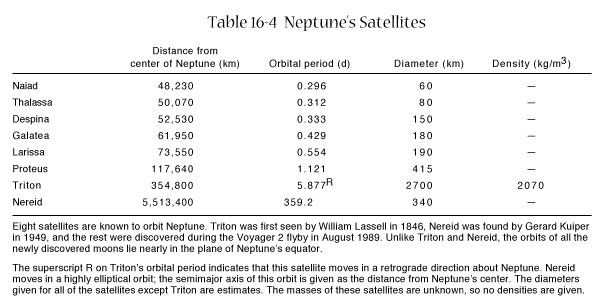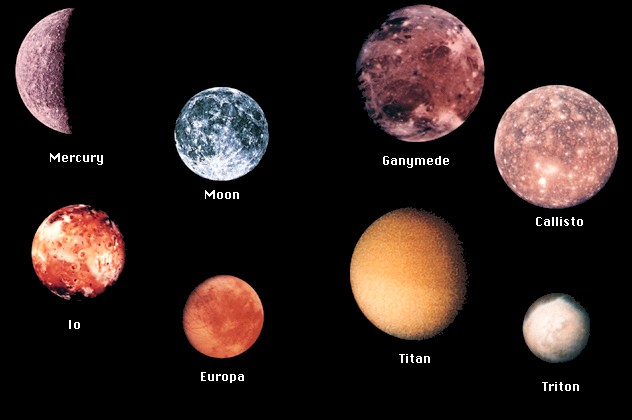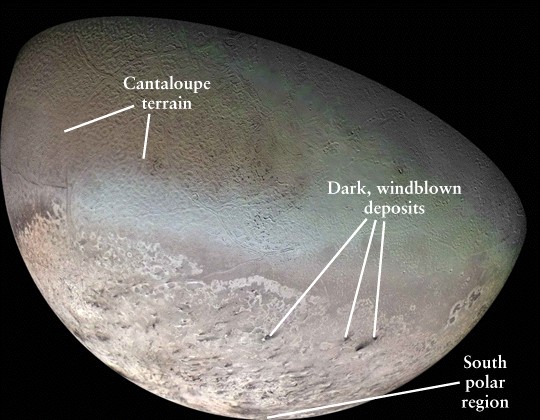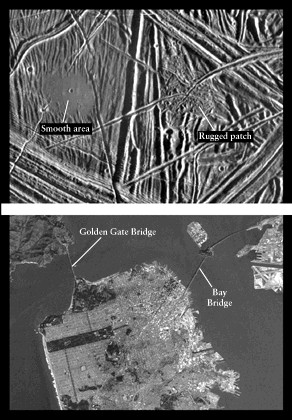 Back Back |
Next
|
Neptune's
Main Moon Triton
-
7 other
known moons probably like Uranus's smaller satellites
-
Triton:
last one of the "major moons"
-
Lots
of unusual features
-
Not
many craters
-
Plumes
observed by Voyager 2
-
Either
from warm interior
-
heated
tidally by previously eccentric orbit (because of gravitational capture--see
next slide)
-
Plumes
form dark smudges on surface
-
smudges
appear wind-blown
-
Triton
indeed has a thin atmosphere with winds
-
mostly
nitrogen
-
what
other solar system bodies have mostly Retrograde (backwards) orbit
-
clockwise
or counterclockwise?
-
Triton
probably formed somewhere else and was captured by Neptune
-
4 outer
moons of Jupiter 1 of saturn also retrograde
-
Triton
much bigger than these
-
Triton's
orbit is decaying
-
eventually
Triton will spiral inside the Roche limit
-
what
happens to gravitationally bound objects inside the Roche limit?
-
-
atmospheres?
-
Some
terrain on Triton resembles Europa and Ganymede's ice cracks
-
Unique
"Cantaloupe" terrain
-
Surface
temperature 37 K, cold enough for nitrogen ice


Triton
from Voyager 2

Europa's
ice crack surface

 Back Back |
Next
|



